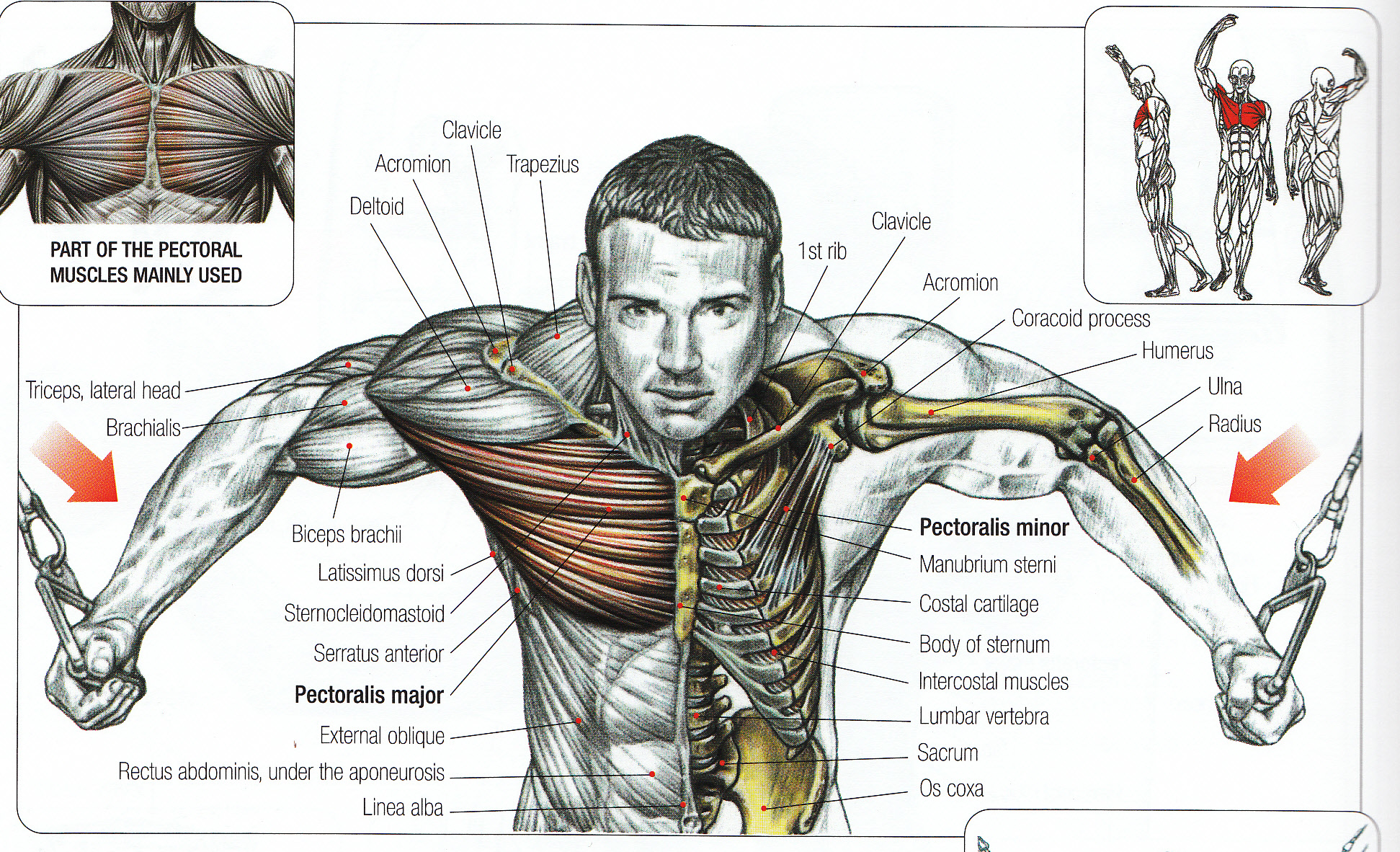
Many gyms are now well equipped with cable stations which allow gym goers to attach various handles and bars and perform traditional exercises using the smooth and versatile cable system. Some trainees prefer the ease of changing the resistance, others favour the smoother and continuous resistance compared to the free weight counterparts, and many incorporate cable work into their training session as a means to offer variation to encourage new stimulus. For the cable virgins we have chosen a selection of exercises (listed below) which are great when performed using a cable station, so why not try them during your next workout?
Cable fly
Instructions: Attach a D handle to the high pulleys on two towers. Grasp each handle and stand upright in the middle with arms outstretched. Bend at the knees and slightly bend forward whilst bring the arms into position ready to perform a fly. From this starting position bring the handles together in an arc motion to the front of the body. Reverse the movement in a slow and controlled manner. Repeat for repetitions.
The cable fly is a great choice of exercise for isolating the chest muscles, and is preferred by many over the traditional free weight exercise, the dumbbell fly. The trainer can really benefit from the continual tension the cable provides during the cable fly, as this continual resistance is missing from the dumbbell fly when the relative resistance to the chest is diminished as the dumbbells are brought to the top of the arc.
Triceps extension
Instructions: Attach a small bar to a high cable pulley. Stand upright, grasp the bar and bring it down to waist height so the upper arms are fixed at either side of the torso and the elbows are flexed at just above ninety degrees. From this position extend the arms so the bar is pressed down whilst ensuring the upper arms remain stationary. Extend the arms to full lockout, and then return to the beginning position in a controlled manner. Repeat for repetitions.
This is an excellent movement for isolating the triceps via extension of the elbow. This exercise can also make use of the quick interchange of resistance when using a weight stack, therefore allowing for drop sets to be implemented with ease. For this the trainer would begin with a challenging resistance and perform eight or so repetitions (close to failure), the trainer then reduces the weight and quickly performs another six or so repetitions, the resistance is reduced further for another four or so repetitions to be completed. This technique can push the muscle past its usual demand and encourage new growth.
Rope curl
Instructions: Attach a double rope handle to a low pulley. Grasp both handles and stand upright. Curl the rope whilst ensuring the upper arms remain fixed to the side of the body and the rest of the body does not aid the lift. Slowly lower the rope after peak contraction. Repeat for repetitions.
Similar to the hammer curl, the rope curl stimulates the brachioradialis, the muscle which runs from the forearms to the upper arm. The rope also offers some greater freedom as the hands are not grasping a fixed handle, which may help those with inflexible wrists.
One arm cable row
Instructions: Attach a D handle to a low pulley. Place one foot in front of the other to aid stability, bend forward and grasp the handle. Whilst ensuring sound posture, row the handle towards the upper abdomen whilst maintaining the bent forward position. Once the handle reaches the abdomen reverse the movement in a controlled manner. Repeat for repetitions.
Intermediate and advanced trainers can often handle relatively heavy loads for the bent over dumbbell row, yet large dumbbells can limit the range of motion somewhat. The cable row eliminates this problem by allowing for a greater range of motion.